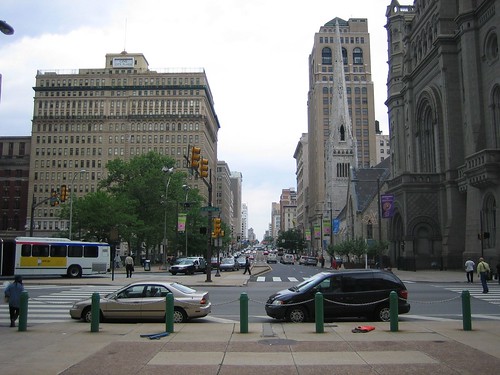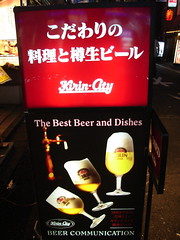I just got back last night from a brief quasi-business trip to Seoul. The most memorable part was getting off the plane, turning on my phone and seeing an e-mail from Adam which read, in full:
Subject: Abe resigning!
Body: YES screw that guy
That’s way better coverage than any Japanese news site, in my opinion.
Anyway, after wandering around Seoul for a day or so like a typical bemused tourist (this was my first time in Korea), here are some conclusions I have reached:
Six things that are better in Korea
- Street food. Festivals in Japan are good for this sort of thing, I guess, but don’t come anywhere close to Jongno at night.
- Toothbrushes. Japanese toothbrushes have a tiny head that might belong on an electric toothbrush but makes manual toothbrushing twice as laborious. Korea has nice, big, industrial-strength toothbrushes that don’t mess around.
- Mobile phone reception. My phone never lost a bar on the subway ride from the airport to downtown. Words cannot express the frustration I have when I’m riding the Tokyo metro, see an interesting item in my Gmail inbox, hear the train doors closing, frantically click to try to load the message before the train goes off into the tunnel, and end up staring at the screen for the next two minutes wondering why the train is suddenly going so damn slow.
- StarCraft and Counterstrike on television. Korean cable is awesome even if I can’t understand most of it.
- Chopsticks. Those stainless-steel Korean restaurant chopsticks are practically lethal weapons, and I get the feeling that with enough Korean chopstick training I could kill a man with my bare hands. I imagine this is part of the point, actually.
- Women. If we’re to use a hotness scale here, Korea has both a higher mean and a narrower standard deviation. Or, in layman’s terms, there are more hotties and the hotness is more consistent. Not to disparage Japanese women, of course—beauty is more than skin-deep, but, well, the skin is where it shows first.
Six things that are better in Japan
- Cleanliness. Granted, this is better in Japan than anywhere else in the world (except maybe Singapore), and Seoul is certainly not as bad as Shanghai, but Seoul still has the grubbiness of a major American or European city about it, and the air quality could use some work.
- Convenience stores. Korean convenience stores come close in many respects, but they’re missing something. Was it bentos? Maybe softcore porn?
- Manners. This is another area where Korea seems to be in a zone smack between Japan and China. In Japan, nobody bothers anybody most of the time. In China, everybody bothers everybody all the time. In Korea, shopkeepers are often pushy and homeless people occasionally rattle their coin mug in your face, but for someone used to the Japanese way of doing things, that seems like a lot. (Which just goes to show how Japan can spoil someone.)
- Walking. Seoul is walkable here and there, but much more spread out than Tokyo, and in the north-central area, being unable to cross the street seems more like the norm than the exception.
- Money. The new won notes look just like euros. The yen at least looks unique. Even if the phoenix on the back of the 10,000 yen note looks rather nightmarish, you at least have the comfort of Fukuzawa Yukichi staring down your trading partner as if thinking “I am not amused.”
- Trains. If you compare a map of the Seoul subway system to a map of the Tokyo subway system, the two look like equals, but that ignores the fact that (a) Tokyo’s subway lines cover a much smaller geographic area, so the stations are far more densely crammed in together, and (b) Tokyo also has scores of train lines that aren’t subways, while Seoul doesn’t have much more than the lines on the subway map. I really wanted more excuses to ride the subway around, but it always ended up being much easier to walk or hail a cab.
Anyway, those are my completely uneducated opinions at first immersion. A public “thank you” to Brendon Carr of Korea Law Blog for showing me where to get good curry, and to United Airlines for making intra-Asia mileage award tickets so darn cheap. I’ll be back one of these days…






